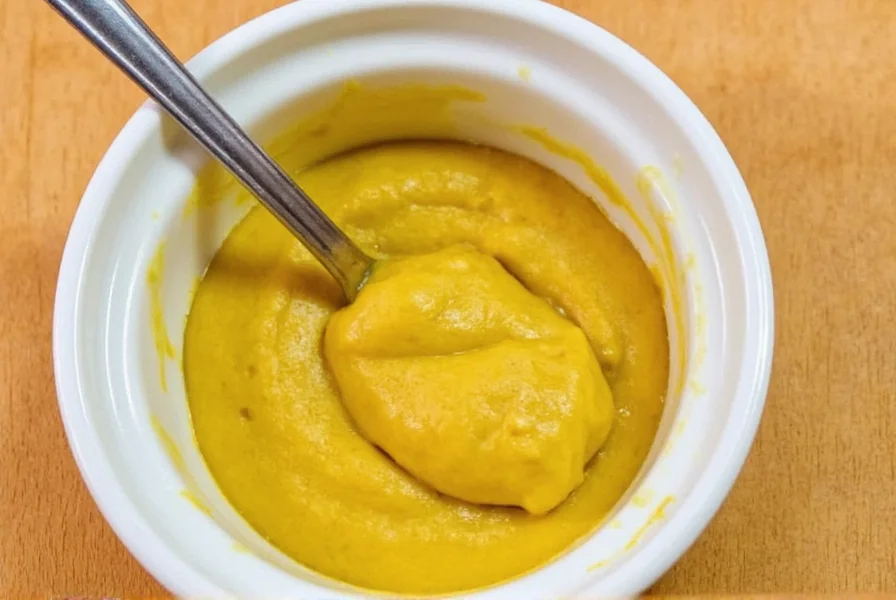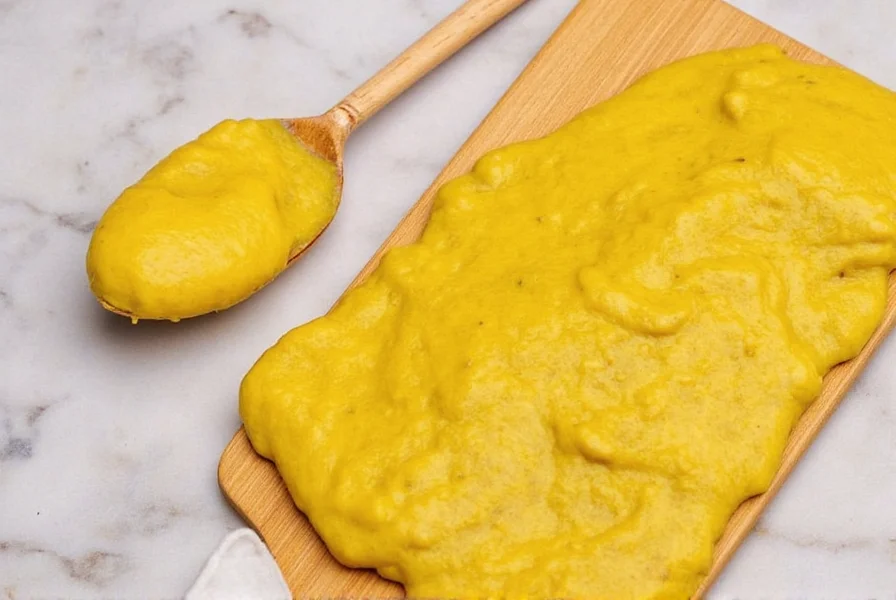Mustard is a versatile condiment made from ground mustard seeds, liquid, salt, and spices. This guide explains exactly what mustard is made of, how it's produced, and the key differences between popular types like yellow mustard, Dijon, and honey mustard. Whether you're curious about the science behind its heat or want to make your own at home, you'll find all the answers here.

What Mustard Is Made Of: The Core Ingredients
At its most basic, mustard consists of just three essential components:
- Mustard seeds (yellow, brown, or black varieties)
- Liquid (vinegar, water, wine, or beer)
- Salt
Additional ingredients like spices, honey, or turmeric create different flavor profiles, but these three elements form the foundation of every mustard variety.

| Ingredient | Purpose |
|---|---|
| Mustard Seeds | Provide flavor base and heat |
| Vinegar/Water/Wine | Activates enzymes, controls texture |
| Salt | Enhances flavor, preserves freshness |
| Spices | Adds depth, complexity, and regional flair |
How Mustard Gets Its Heat: The Science Behind the Flavor
The distinctive spicy kick of mustard comes from a chemical reaction. When mustard seeds are crushed and mixed with liquid, an enzyme called myrosinase reacts with compounds called glucosinolates. This produces allyl isothiocyanate—the same compound found in horseradish—which creates mustard's signature nose-tingling heat.
The type of seed and liquid used determines the intensity of this reaction:
- Yellow seeds produce milder heat
- Brown and black seeds create more intense heat
- Vinegar creates immediate heat
- Water creates slower, more gradual heat development
Types of Mustard and Their Key Differences
| Type | Main Seed | Liquid Used | Flavor Profile | Best Use |
|---|---|---|---|---|
| American Yellow | Yellow seeds | Vinegar + water | Mild, tangy, bright | Hot dogs, sandwiches |
| Dijon | Brown seeds | White wine | Sharp, smooth, complex | Sauces, dressings, charcuterie |
| Whole Grain | Black & brown seeds | Vinegar | Rustic, earthy, textured | Meats, pickles, burgers |
| Honey Mustard | Yellow seeds | Honey + vinegar | Sweet & savory balance | Dipping sauces, salads |
| Karashi | Brown seeds | Water or alcohol-based | Spicy, pungent, aromatic | Japanese cuisine, ramen, sushi |
DIY Mustard: How to Make Your Own at Home
Creating homemade mustard is simple and allows you to customize flavors to your preference. Here's a basic recipe:
- Mix 2 tablespoons mustard seeds with 1/4 cup liquid (vinegar, wine, or water) and let sit overnight
- Blend until smooth or leave chunky for texture
- Add salt and optional flavorings (honey, garlic, herbs, etc.)
- Refrigerate for at least 24 hours to develop flavors

Buying Guide: How to Choose the Right Mustard
When shopping for mustard, consider these key factors:
- Check the ingredient list—avoid unnecessary fillers like corn syrup or artificial flavors
- Look for the seed type—yellow seeds for mild, brown/black for more heat
- Consider the liquid used—vinegar for immediate heat, wine for complexity
- Read labels for added sugars—honey mustards can be surprisingly high in sugar
Health Benefits of Mustard
Mustard offers several health benefits:
- Very low in calories (typically under 10 calories per teaspoon)
- Rich in minerals like selenium, magnesium, and calcium
- Contains antioxidants that help fight free radicals
- Potential anti-inflammatory properties from allyl isothiocyanate
Just be mindful of added sugars in honey mustards and sodium levels in some commercial varieties.
Frequently Asked Questions About Mustard
What are the basic ingredients in mustard?
All mustard starts with just a few core ingredients: mustard seeds (yellow, brown, or black), a liquid (typically vinegar, water, or wine), salt, and sometimes additional spices or sweeteners. The magic happens when the seeds are crushed and mixed with liquid, activating enzymes that create mustard's characteristic flavor and heat.
Why does mustard have that distinctive spicy flavor?
Mustard's signature heat comes from a chemical reaction. When mustard seeds are crushed and mixed with liquid, an enzyme called myrosinase reacts with compounds called glucosinolates. This produces allyl isothiocyanate—the same compound found in horseradish—which gives mustard its nose-tingling heat. The type of seed and liquid used affects how intense this reaction becomes.
What's the difference between yellow mustard and Dijon mustard?
Yellow mustard uses milder yellow mustard seeds with vinegar and turmeric (which gives it the yellow color), resulting in a mild, tangy flavor perfect for hot dogs. Dijon mustard uses brown or black mustard seeds with white wine instead of vinegar, creating a sharper, more complex flavor profile with less sweetness. Dijon also typically has no turmeric, so it's more beige in color.
Is mustard actually good for you?
Yes! Most mustards are incredibly low in calories (typically under 10 calories per teaspoon) while providing small amounts of selenium, magnesium, and other minerals from the mustard seeds. Mustard also contains antioxidants and compounds with potential anti-inflammatory properties. Just watch for added sugars in honey mustards or high sodium levels if you're on a restricted diet.
Why doesn't mustard spoil as quickly as other condiments?
Mustard has natural preservative qualities due to its acidity (from vinegar or other acidic liquids) and the antimicrobial properties of mustard seeds themselves. The combination creates an environment where bacteria struggle to grow. Most commercial mustards can last 1-2 months in the refrigerator after opening, while homemade versions typically last about 1 month.
Conclusion
Mustard is more than just a condiment—it's a versatile flavor enhancer with a fascinating history and science behind it. Whether you're using it on a hot dog, in a salad dressing, or as part of a gourmet dish, understanding what mustard is made of helps you appreciate its complexity and versatility. Next time you reach for a jar of mustard, you'll know exactly what makes it tick!











 浙公网安备
33010002000092号
浙公网安备
33010002000092号 浙B2-20120091-4
浙B2-20120091-4